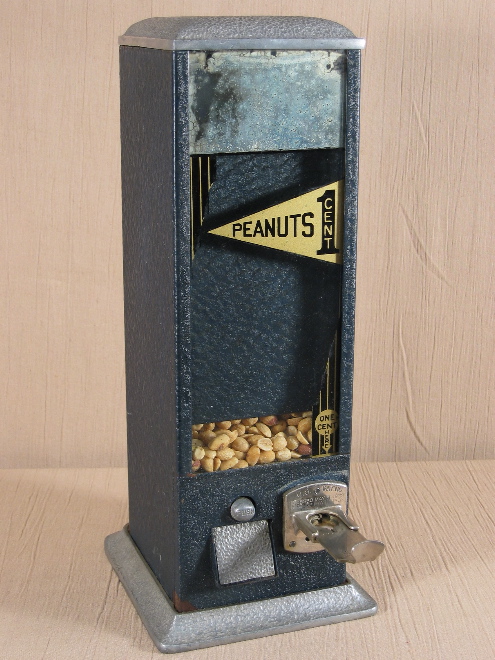___________________________________________________________________________________________
Mystery 35

___________________________________________________________________________________________

Maker unknown, c. 1930's, 16 1/2". This model is pictured on page 209 of Silent Salesmen Too. Based on that picture I'd always thought it was a minor variation of the Penny Carnival, with a rounded lid and other small differences. I'd never seen one live, so based on the pictures and the description in the book, the differences between this and the Penny Carnival seemed negligible and I could never understand why Bill Enes called this a mystery machine when its origin was so obvious.
At the Fall 2005 Chicago show I was walking through the parking lot and my eyes alit on the machine pictured above. It looked like a Penny Carnival, all right, but a miniature example of one. Luckily I had a shorter route to the machine then the guy I was walking with, who'd spotted it at the same time I did and also thought it deserved a closer look. We both moved toward the machine, but I was a step ahead and in good position to give him an elbow to the gut and a quick reverse karate chop to the larynx, which slowed him down enough to let me get to the machine first. He tried to trip me as he recovered, but he's tried that several times before so I expected it and was able to step over it with ease. He needs some new moves, but it's not in my interest to tell him that.
I picked up the machine and at first didn't recognize it as a Mystery 35. The size was so out of context with my perception of a Mystery 35 that I just didn't make the connection at first. Then the light bulb went off. This machine is 16 1/2" tall compared to the 20" Penny Carnival, and the width and and depth are proportionately smaller as well. A 3 1/2" difference in height doesn't seem like much, but the proportionally smaller width and depth combine to produce a machine with about 45% less volume than the Penny Carnival, and the difference is striking. It's got almost all the art deco charm of a Penny Carnival, but without the bulk. Ironically, I'd brought a Penny Carnival to the same show to sell, not because I didn't like the Penny Carnival (I did and still do), but because I didn't have a good spot for it because of its size. I ended up buying the machine above and then later that day selling the Penny Carnival, so in my mind I paid for an upgrade.
The machine is made with a sheet metal midsection and an aluminum baseplate and lid. Other than size this model has several minor differences from the Penny Carnival:
___________________________________________________________________________________________
___________________________________________________________________________________________
©Small Vintage Vending 2003-2009